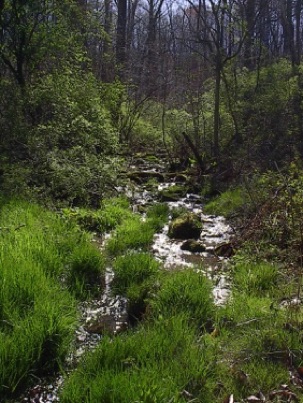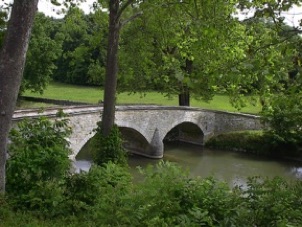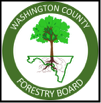A Glossary of Forest Terminology
Copied from The Woods in Your Backyard
by Jonathan Kays, Jay Drohan, Adam Downing, Jim Finley
[New York, Natural Resources, Agriculture, and Engineering Service, 09/2006]
Afforestation. The process of establishing a forest,
especially on land not recently forested.
Aspect. The direction in relation to the sun.
Biological carrying capacity. The number of individuals of an
animal species that a piece of land can support in good health
over time without damaging the habitat.
Browse line. A line about 6 feet high created by heavy deer
browsing. Below this line, not much green vegetation remains.
Catkin. The petal-less flower of poplars, walnuts, and birches
Coniferous. Evergreen trees; most have needles or needle-like
leaves.
Cover. Trees, shrubs, tall grass, thickets, burrows, rock and brush
piles, stream banks, caves, and rock ledges that protect animals
from the weather and predators and provide them safe places to
eat, sleep, breed, and nest.
Crop tree. Any tree you want to keep and nurture. Possibilities
include those that are particularly well formed, those you want
to keep for timber, trees that produce fruit or mast, and those
with special wildlife value (i.e. a hollow tree for denning).
Cultural carrying capacity. The number of individuals of an
animal species that society is willing to tolerate.
Deciduous. Trees and shrubs that lose their leaves each autumn;
most are broad-leaved.
Edge. Where different plant communities or different age classes
of the same plant community come together.
Emergent aquatic vegetation. Plants that are rooted in the bottom
of a water body and extend above the water surface. Common
examples are cattails, bulrush, smartweed, and arrowhead
Exotic species. An introduced species that, through human
intervention, grows where it would not naturally occur.
Forb. A broad-leaved, non-woody plant (as opposed to grass);
most wildflowers are forbs.
Forest canopy. The crown of the tallest trees in a forest; shades
the understory.
Groundwater. Water that is stored underground in cracks in
rocks, in porous rock formations, and in the spaces between
soil grains.
Hard edge. A place where there is an abrupt transition between
plant communities.
Hardwood. A deciduous tree.
Herbaceous. a non-woody plant.
Home range. The area within which an animal normally travels
to meet its food, water, and cover needs.
Home range. The area within which an animal normally travels
to meet its food, water, and cover needs.
Invasive species. A species that reproduces rapidly, spreads over
large areas of the landscape, and has few, if any, natural
controls to keep it in check.
Mast trees. Trees that produces, fruits, seeds, or nuts edible to
wildlife.
Native species. Occurs naturally in a particular place without
human intervention.
Overtopping. Occurs when one tree grows taller and shades the
crown of another tree.
Riparian. Relating to or located on the bank of a water body,
usually of freshwater; the area beside a water body.
Riparian buffer. A waterside area containing vegetation that
protects the water body from potential pollutants such as
sediment and nutrients and holds the bank in place.
Runoff. The portion of precipitation that flows over land to a
water body.
Seep. A place where groundwater surfaces, sometimes forming a
pool.
Shade-intolerant plants. Plants that need full sunlight and cannot
grow in the shade of other plants.
Silviculture. The development and care of forests.
Site quality. A measure of the suitability of a site for growing
trees.
Snag. A dead standing tree, often valuable for wildlife.
Soft edge. A place where there is a gradual transition from one
type of plant community to another.
Softwood. A coniferous tree.
Spring. A source of water from the ground.
Succession. The sequential process of natural change and
replacement of plant and associated animal communities over
time.
Understory. The vegetation below the forest canopy; includes
grasses, forbs, shrubs, and small or young trees.
Uneven-aged forest. A stand of trees of three or more distinct age
classes, either mixed or in small groups; also called mixed-age
stand.
Vertical stratification. Describes a forest canopy with plants of
many different heights.
Wolf tree. A large tree, often a remnant from a previous stand.
Has a broad crown and many limbs. Often stands alone in a
field or a property boundary.

Wetland/small stream

Burnside Bridge, Antietam National Battlefield
